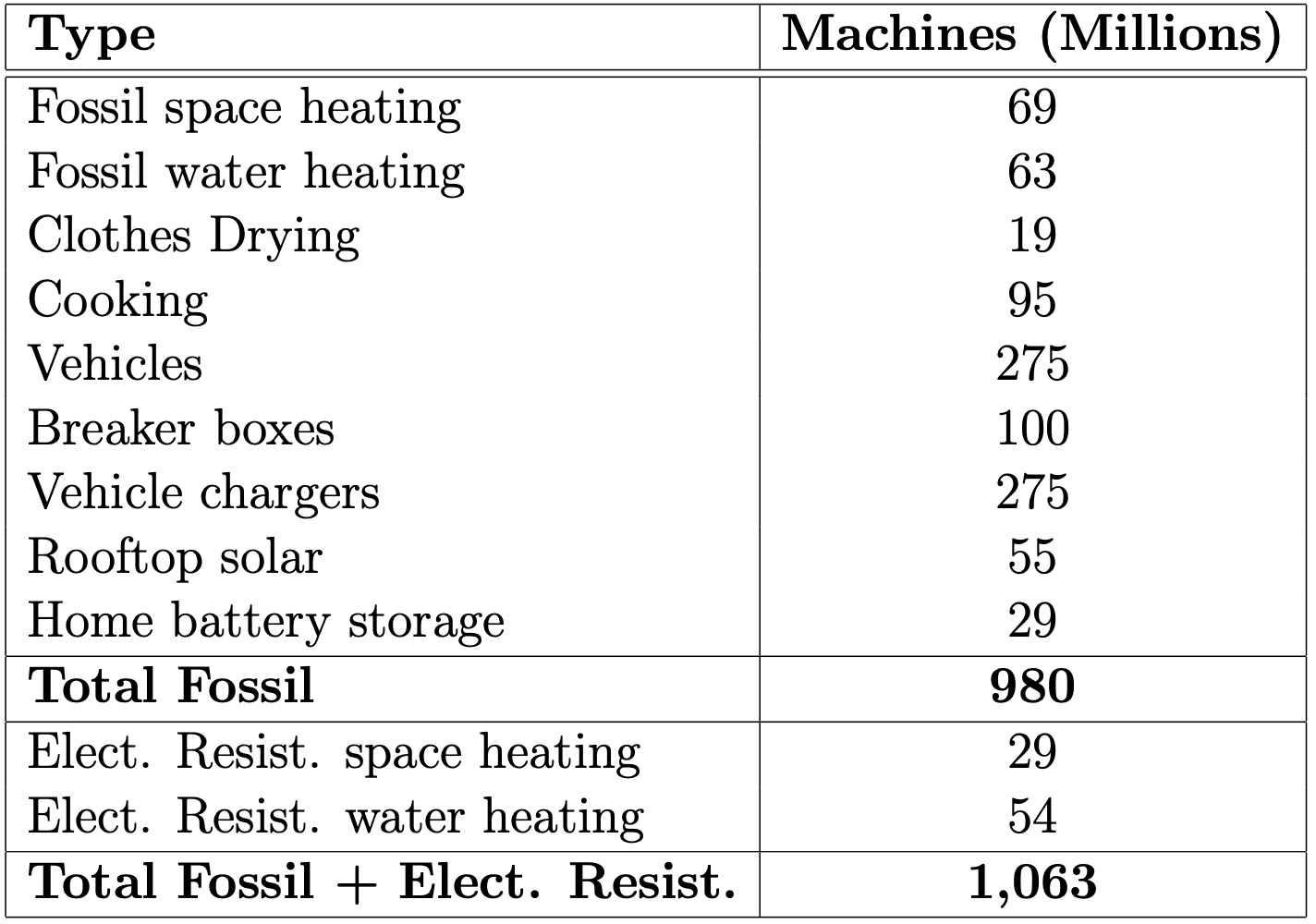One Billion Machines
By Saul Griffith and Sam Calisch, June 2021
Reaching net-zero emissions in the U.S. is a critical and achievable strategy in the fight against climate change. How can we do it? By replacing or installing one billion American-made machines.
Our “One Billion Machines” report breaks down the math behind this urgent opportunity, outlining how many electrified furnaces, water heaters, cars, clothes dryers, and infrastructure machines it will take to get us to net-zero emissions in the U.S. in time to comply with the IPCC’s goal of keeping global warming under 1.5-2.0°C above pre-industrial levels.
Findings
A total of 1,063,000,000 machines, or 50 million machines a year for the next 20-25 years must be installed or replaced in the U.S. in order to eliminate household CO2e emissions.

Media Coverage
 New York Times
New York TimesSen. Martin Heinrich, D-New Mexico
Guest Essay: Your Next Car and Clothes Dryer Could Help Save Our Planet
"Rewiring America offers one blueprint for this transition that underscores its enormous scope — and the benefits that will result. The group has calculated that we must replace or install one billion machines...What if we build those electric appliances in America? That’s a lot of manufacturing."
 GreenBiz
GreenBizSaul Griffith
Saul Griffith on the One Billion Machines That Will Electrify America.
Rewiring America founder Saul Griffith breaks down the plan to avoid climate disaster by rapidly electrifying the country and create 25 million jobs while doing it.
 Saul Griffith
Saul Griffith"It’s time to demystify decarbonization so that we understand what we need to do to switch our economy from one that relies on fossil fuels to one powered by clean electricity. This requires understanding the machines we use, their energy needs, and how, and how quickly, we can transition those machines to ones that are fueled by renewable energy (predominantly wind and solar)."
